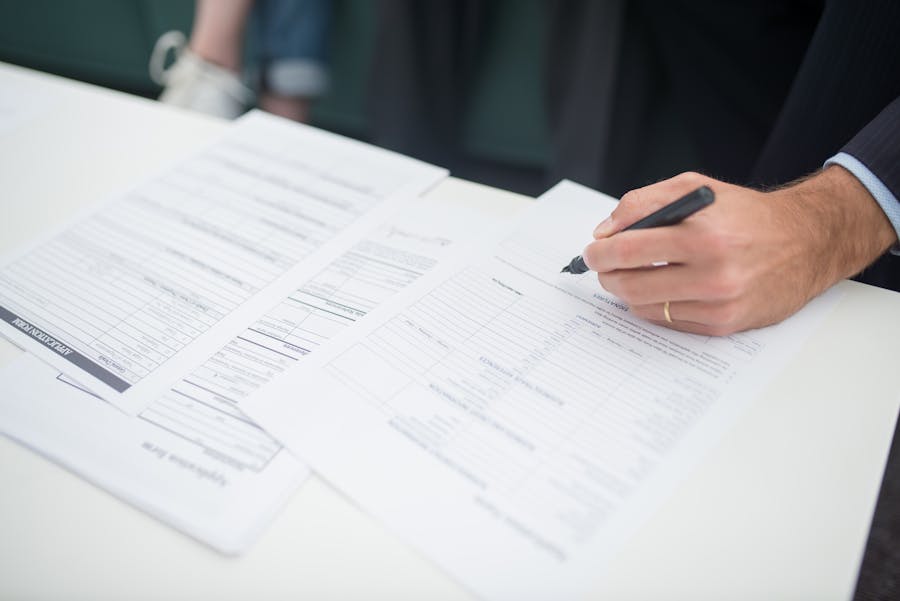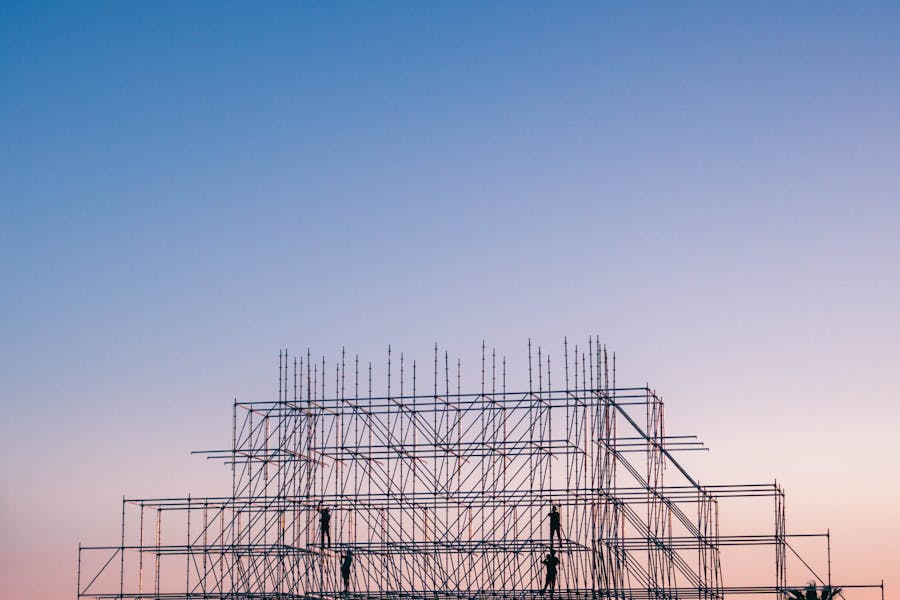H-2B Visa Cap: Understanding How the “Lottery” System Really Works

If your business relies on seasonal workers for landscaping, hospitality, construction, or other temporary non-agricultural positions, you’ve likely heard about the H-2B visa program. But with a limited cap of 66,000 visas annually and high demand, securing these workers has become increasingly challenging for employers.
At De Wit Immigration Law, we regularly assist businesses with the H-2B program. One of the most confusing aspects is what many refer to as the “H-2B lottery”—though as we’ll explain, it’s not truly a lottery in the traditional sense.
What Is the H-2B Visa Program?
The H-2B visa program allows U.S. employers to bring foreign nationals to fill temporary non-agricultural jobs when qualified U.S. workers are unavailable. These positions must be:
- Temporary in nature: Either a one-time occurrence, seasonal need, peak-load need, or intermittent need
- For a limited period: Typically less than one year in duration
- Genuinely temporary: The employer must demonstrate that their need for workers is not permanent
To qualify, employers must prove that:
- There aren’t enough U.S. workers who are able, willing, qualified, and available to do the temporary work
- Employing H-2B workers won’t adversely affect the wages and working conditions of similarly employed U.S. workers
- The need for the prospective worker’s services is temporary
The H-2B Cap System: Not a True Lottery
The term “H-2B lottery” is commonly used but somewhat misleading. Unlike the H-1B visa lottery, where applications are randomly selected, the H-2B allocation process uses a randomized grouping system that significantly impacts processing timelines.
Here’s how it actually works:
Step 1: The Two Annual H-2B Quotas or “Caps”
Congress has set the annual H-2B cap at 66,000 visas per fiscal year, divided into two halves:
- 33,000 for workers beginning employment in the first half (October 1 – March 31)
- 33,000 for workers beginning employment in the second half (April 1 – September 30)
Any unused visas from the first half can roll over to the second half, but unused visas don’t carry over to the next fiscal year.
Step 2: The Department of Labor’s Randomization Process
When employers submit labor certification applications to the Department of Labor (DOL), each application is randomly assigned to a processing group—typically designated by letters (A, B, C, D, etc.).
This group assignment is what people often refer to as the “lottery,” but it’s important to understand:
- It’s not determining whether you receive H-2B visas
- It’s determining the order in which your application will be processed
Step 3: Sequential Processing
The DOL processes these applications sequentially by group—all of Group A before Group B, all of Group B before Group C, and so on.
This sequential processing creates a de facto lottery system because:
- By the time DOL processes later groups, USCIS may have already received enough petitions from earlier groups to reach the cap
- Applications in later groups may never get processed in time, even if they would otherwise qualify
The Real Impact of Group Assignment
For the October 1 filing period (first half of the fiscal year), demand is typically lower, with only employers in Groups A and B. Groups A and B normally make it into the cap, and until now, all timely filed October 1 start date applications have successfully secured visas. We haven’t seen a year yet when the cap is reached before Groups A and B are processed for timely filed October 1 applications. For October 1 applications, the grouping system determines processing order, but not whether you ultimately get a visa.
However, for the April 1 filing period (second half), demand is substantially higher, with employers potentially assigned to Groups A through F or beyond. For April 1 filers, Group A always gets in, absent unusual case-specific circumstances, and Group B applications almost always make it into the cap if they move through the DOL process smoothly without delays. Groups C and beyond usually cannot get into the cap, though there have been a few seasons when Group C gets lucky and some applicants make it in. For April 1 filers, the grouping system effectively acts as a de facto lottery.
This means:
- Employers in Group A have the highest chance of receiving certification in time to file with USCIS before the cap is reached
- Employers in later groups face a significantly reduced chance of securing H-2B workers—not because of a true lottery, but because processing delays effectively exclude them from consideration
The H-2B Application Timeline
Understanding the timeline is crucial for employers planning to use the H-2B program:
- 150-180 days before the temporary job opportunity starts: File prevailing wage determination request with DOL
- 75-90 days before start date: File temporary labor certification application with DOL
- After filing: DOL reviews application for temporary need. If satisfied, issues a Notice of Acceptance (NOA) – this is the event whose processing order is determined by the group assignment. Group A may receive NOAs within weeks, while later groups may wait months.
- If DOL questions temporary need: Instead of an NOA, DOL issues a Notice of Deficiency (NOD). Employer must respond within 10 business days. If DOL is satisfied with the response, it then issues the NOA.
- Day after receiving NOA: Employer begins recruitment for U.S. workers
- After DOL certification: File I-129 petition with USCIS (which must be done before the cap is reached)
- After USCIS approval: Foreign workers apply for visas at a U.S. consulate abroad
Key Insights for FY 2025 H-2B Applications
For Fiscal Year 2025:
- The first half cap (October 1, 2024 – March 31, 2025) was reached on September 18, 2024
- The second half cap (April 1, 2025 – September 30, 2025) was reached on March 5, 2025, with USCIS announcing they had received enough petitions to meet the statutory limit
This timing demonstrates the increasing demand for H-2B workers, particularly for spring and summer seasonal needs.
Supplemental H-2B Visas: Additional Opportunities for Qualifying Employers
In recent years, the Department of Homeland Security (DHS) has authorized supplemental H-2B visas above the regular cap. These supplemental allocations typically prioritize:
- Returning workers who received H-2B visas in one of the last three fiscal years
- Workers from specific countries: Guatemala, Honduras, El Salvador, Costa Rica, Colombia, Ecuador, and Haiti
For FY 2025, employers should monitor DHS announcements regarding any supplemental visa availability, which could provide additional opportunities to hire temporary workers despite the regular cap being reached.
H-2B Cap Exemptions
Not all H-2B workers count against the annual cap. Those exempt include:
- Workers extending their stay
- Workers changing employers or the terms of their employment
- Fish roe processors, technicians, and supervisors
- Workers performing labor in Guam or the Commonwealth of the Northern Mariana Islands (until December 31, 2029)
Strategies for Improving Your Chances
While the group assignment process is random, employers can maximize their chances of securing H-2B workers by:
- Planning early: Begin the application process well in advance
- Working with an experienced H-2B Visa Lawyer: Immigration attorneys familiar with H-2B requirements can help avoid delays and denials
- Preparing for alternatives: Develop contingency plans if your application falls into a later processing group
- Considering cap-exempt options: If applicable to your situation
- Monitoring supplemental allocations: Be prepared to act quickly if additional visas become available
Conclusion
The H-2B “lottery” isn’t a true lottery but rather a randomized processing order that significantly impacts which employers can access this limited visa program. By understanding how this system actually works, employers can better prepare for the application process and develop appropriate workforce strategies.
At De Wit Immigration Law, we help employers navigate the H-2B program, from initial labor certification through petition filing and visa processing. Contact us to discuss your seasonal workforce needs and how we can assist with your H-2B visa strategy.
Note: This information is current as of March 2025. H-2B regulations and processes are subject to change. Always consult with qualified immigration counsel for the most up-to-date guidance.





